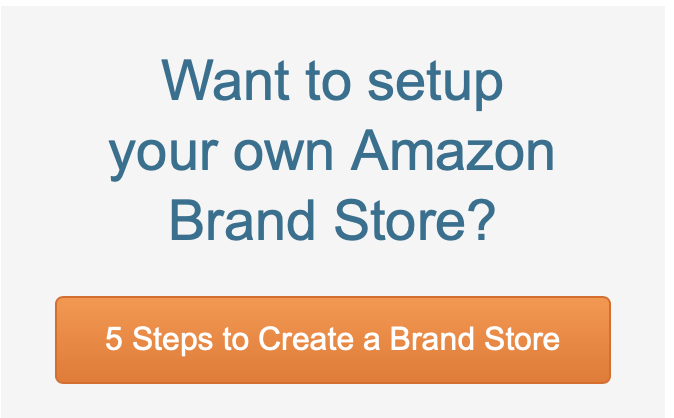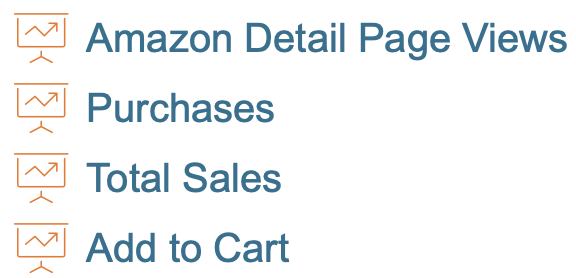June 20th, 2021
If you have ever attempted to drive external traffic to your Amazon listings, you already know how difficult it is to track the effectiveness of your campaign, and how to gauge just how many purchases were made as a direct result of the campaign in question.


Until fairly recently, Amazon carefully guarded this data, and there was no way around it. If there is something to be thankful for this season, it is that Amazon is finally letting sellers get a peek behind the scenes and into the action! Now, sellers can access the Amazon Attribution dashboard on Amazon that is specifically designed to measure the impact of your search terms, social media campaigns, videos, and email campaigns.
With Amazon Attribution, you as a seller will be able to analyze how your customers search, find, and purchase their products on the Amazon platform. Let’s take a closer look at Amazon Attribution, what it is, how it works, and how can you use it to increase your conversions.
What is Amazon Attribution?
 Amazon Attribution is a sales metrics measurement dashboard that allows sellers and brands to track marketing and advertising metrics across a wide array of external platforms. Instead of just measuring direct Amazon traffic, you can now measure off-Amazon-to-Amazon impact and marketing insights. As a seller, you can boost your conversion rates and maximize your ROI by taking advantage of the Amazon Attribution analytics dashboard.
Amazon Attribution is a sales metrics measurement dashboard that allows sellers and brands to track marketing and advertising metrics across a wide array of external platforms. Instead of just measuring direct Amazon traffic, you can now measure off-Amazon-to-Amazon impact and marketing insights. As a seller, you can boost your conversion rates and maximize your ROI by taking advantage of the Amazon Attribution analytics dashboard.
Amazon Attribution Gives Sellers More Opportunities
Before the program was rolled out, sellers were kind of in the dark when it came to how successful their external campaigns were. Amazon Attribution creates the opportunity to optimize a full funnel, multi-channel marketing campaign to help drive traffic and meet your sales goals.
Driving External Traffic is Important
Amazon is one of the most competitive eCommerce platforms in the world, and it is only becoming more and more competitive. While sponsored ad costs continue to rise, as a seller, you will need to find additional ways and methods to attract customers to your Amazon product listings.
 It is no secret that more traffic typically equals more sales, however, don’t anticipate tons of organic traffic – you will need to step up your advertising strategies and create highly targeted campaigns to successfully drive traffic that converts. Instead of waiting for customers to find your products on Amazon, take your sales destiny into your own hands by proactively searching for new customers by running ads on external platforms, outside of Amazon.
It is no secret that more traffic typically equals more sales, however, don’t anticipate tons of organic traffic – you will need to step up your advertising strategies and create highly targeted campaigns to successfully drive traffic that converts. Instead of waiting for customers to find your products on Amazon, take your sales destiny into your own hands by proactively searching for new customers by running ads on external platforms, outside of Amazon.
If your current listings are fully optimized and have already accumulated a high conversion rate, then you should definitely consider starting to run outside advertising as soon as possible. One of the biggest benefits to driving outside traffic as opposed to relying solely on sponsored ads within Amazon search results is that you can direct customers to your Amazon Brand Store—which means that you can direct your customers to a page that focuses on your brand alone, and is completely free from ads for your competitors.
How Much Does Amazon Attribution Cost?
Good news - Amazon Attribution is currently free of charge AND you can invite other users in your company, or on your team to use the Amazon Attribution tool. To grant permission for users directly within the console, simply select the “Manage” tab right at the top of the navigation bar and then select “User management” to add additional users.
Who Can Use Amazon Attribution?
Amazon Attribution is currently available to professional sellers enrolled in Amazon Brand Registry, vendors, as well as agencies that advertise for their products on Amazon.
How to Access and Use Amazon Attribution
- Vendors fill out this sign-up form. Sellers sign in to Seller Central and register.
- Add the products for which you want to measure conversions.
- Generate tags for each of your marketing strategies.
- Implement tags across your search ads, social ads, display ads, video ads and email marketing.
Amazon Attribution Tags
Once you’ve registered for your Amazon Attribution account, then you can create your very own attribution tag. Amazon gives you a set of instructions on how to create the tag:
- Select the advertiser name you want to create the tag for
- Click on the ‘New Order’ button
- If you’re planning to create a link for a Google Ad, then select ‘Upload a file’ and follow the given instructions.
- If you want to create a link anywhere else other than Google Ad, you can choose ‘Set up an order.’
- Pick an item of your choice from your product listings, and ‘Add’ it.
- In the ‘Order Settings’ section, give a relevant name (or attribution tag) and ID, and click on ‘Continue to Line Items.’
- From the Publisher drop-down menu, you can choose where you want to post the link from a list of available options.
- Under the Click-through URL, give your product listing page URL.
- Then hit the ‘Create’ button.
Congratulations! You’ve successfully created your very first Amazon Attribution tag.

Track Your Metrics
After you have created your attribution tag, you will be able to track the following metrics:
You can then track these metrics by ASIN or campaign name. By having access to these metrics, you will be able to quickly figure out which of your listings are responsible for driving the bulk of your sales, while also seeing which campaigns are not providing you with a return on your investment. With these valuable insights, you can then optimize your external campaigns to get the most out of them.
The beauty of Amazon Attribution is that it can be used to measure traffic from almost any external source, including Paid Social channels like Facebook and Instagram. Brands now have the power to create targeted tracking templates, and how granular you get in measuring your brand performance is up to you, the seller.
Measuring your data is vital to make improvements to your current ad campaigns, and seeing exactly how your customers find and buy your products on Amazon eliminates a lot of guesswork. So what are you waiting for? Get started with Amazon Attribution today!
The world around us had changed from print ads and clipping coupons to digital partnerships with influencers, social media accounts and more. Take advantage of these digital platforms to further promote your products. Let us help you fully optimize your listings and Brand Store. You want to make sure that you are sending customers to the best possible listing or store in order to increase your conversion rate. Schedule your free consultation today.
![]()


